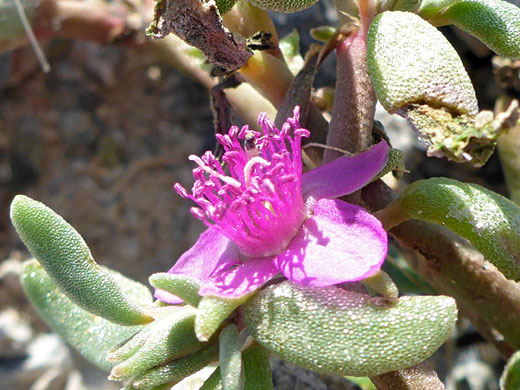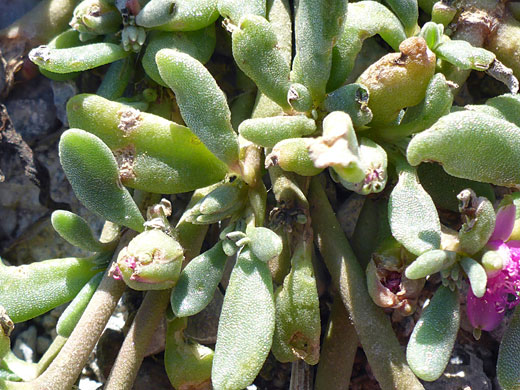Common name:
Western sea-purslane
Family:
Scientific name:
Sesuvium verrucosum
Main flower color:
Range:
Scattered areas of all states from Oregon to Texas
Height:
A few inches - grows along the ground
Habitat:
Salt marshes, alkali flats, beach margins, riparian areas, from sea level to 3,000 feet
Leaves:
Succulent, opposite, spatulate to linear, up to 1.5 inches long
Season:
March to October
Like all members of this genus, flowers of sesuvium verrucosum have no petals, only five sepals, colored rose pink, sometimes tinged with orange. Sepals have minutely irregular edges and pointed tips that curve upwards slightly, and are lanceolate to ovate in shape; they surround a ring of 30 pink, upwards-pointing stamens and a whitish, five-lobed pistil. Filaments are joined at the base, to about a third of their length. Flowers form singly at the leaf axils, and they are generally sessile, lacking pedicels.
The stems and the thick, succulent leaves have a dense covering of tiny, crystalline protrusions. Stems are prostrate, up to 3 feet in length, and branched, forming mats. They do not take root from the leaf nodes.
The stems and the thick, succulent leaves have a dense covering of tiny, crystalline protrusions. Stems are prostrate, up to 3 feet in length, and branched, forming mats. They do not take root from the leaf nodes.
All Contents © Copyright The American Southwest | Comments and Questions | Contribute | Site Map




